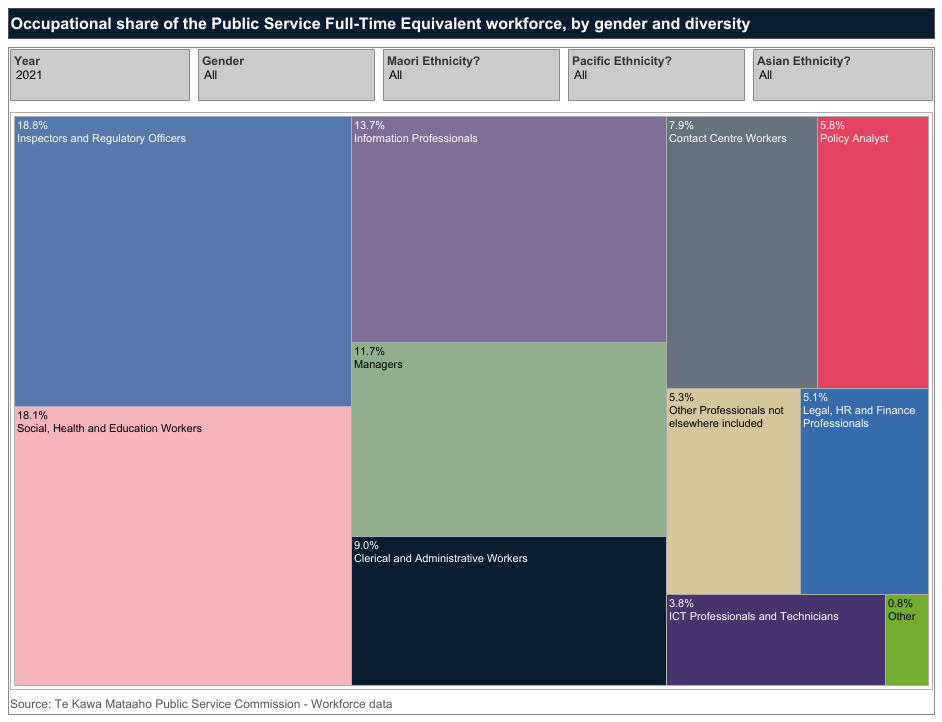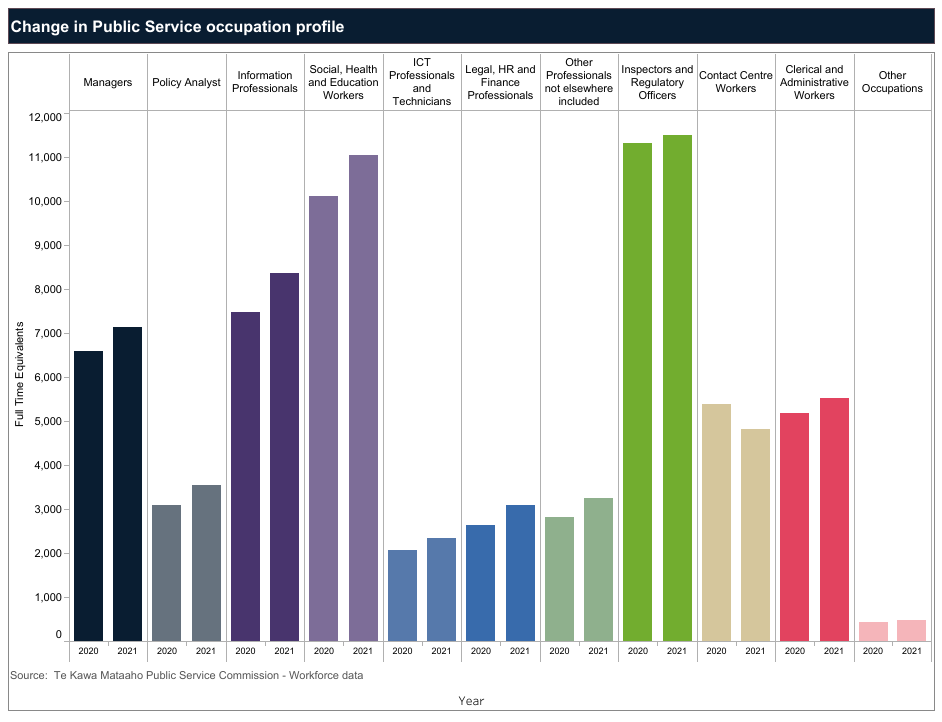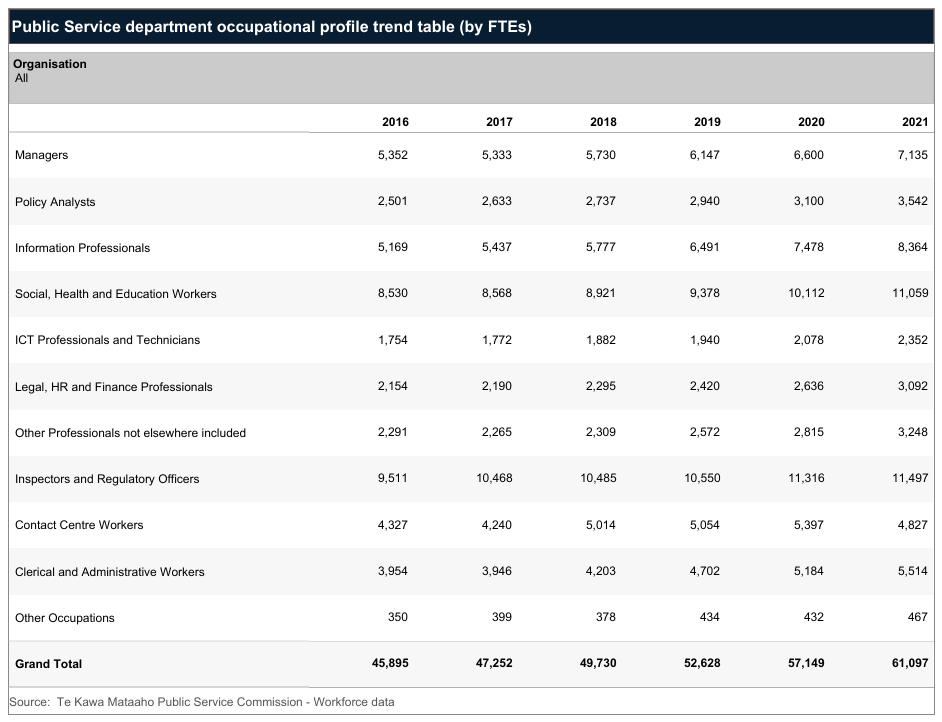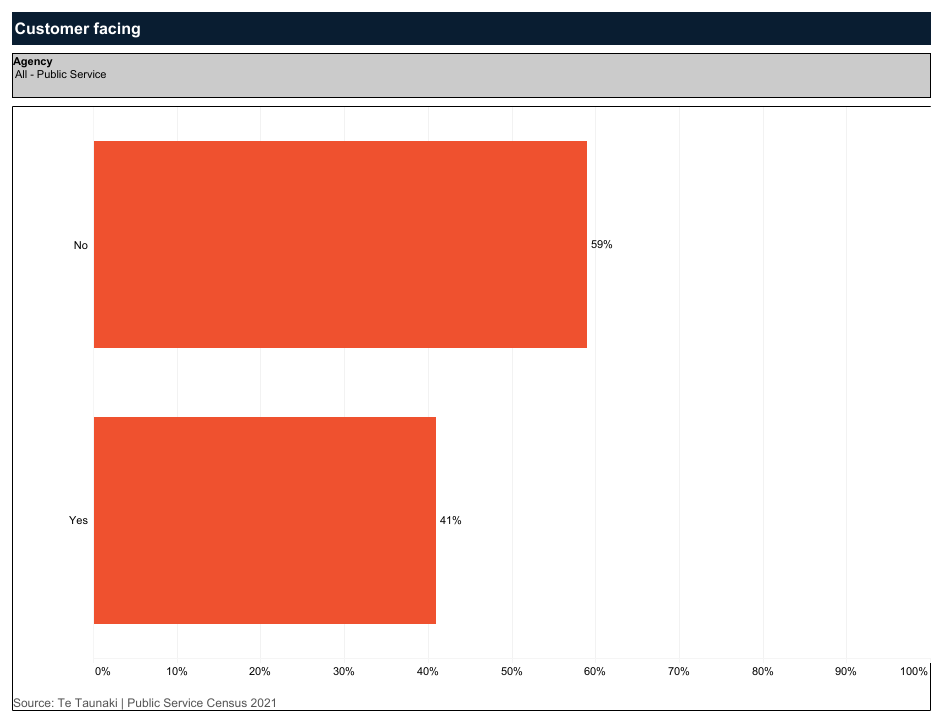-
Section 01
Workforce Data — Senior leadership 2021
-
Section 02
Workforce Data — Remuneration/pay 2021
-
Section 03
Workforce Data — Māori Crown 2021
-
Section 04
Workforce Data — Public sector composition 2021
-
Section 05
Workforce Data — Diversity and inclusion 2021
-
5.1
Workforce Data — Ethnicity in the Public Service 2021
-
5.2
Workforce Data — Gender representation in the Public Service 2021
-
5.3
Workforce Data — Rainbow 2021
-
5.4
Workforce Data — Disability 2021
-
5.5
Workforce Data — Age profile 2021
-
5.6
Workforce Data — Religion 2021
-
5.7
Workforce Data — Inclusion 2021
-
5.1
-
Section 06
Workforce Data — Working in the Public service 2021
-
Section 07
Guidance: Data drilldown and technical guidance 2021
The data we collect gives us information about the occupational profile of the workforce, staff numbers, occupational trends and customer-facing roles.
Occupational profile of workforce
Public Service employees were engaged in a wide range of jobs spread across 249 different occupations in 2021. These can be divided into 10 broad occupational groups as shown in the following chart. The 2 largest groups are ‘inspectors and regulatory officers’ and ‘social, health and education workers’, accounting for 36.9% of the Public Service workforce.

Staff numbers by occupation
Between 2020 and 2021, the Public Service workforce (FTEs) increased by 3,948 or 6.9%. This was driven by increased provision of services to support the Government’s response to COVID-19 across 3 agencies — Ministry for Social Development (MSD), Ministry for Business, Innovation and Employment (MBIE), and Ministry of Health (MoH). These increases include:
- around 360 case managers, 310 capability developers, 90 central processing officers, and 90 customer services officers at MSD
- 50 security officers at MBIE
- 105 health advisors at MoH.
In addition, Customs employed 235 fixed-term assistant customs officers to give effect to the COVID-related Maritime Border Order.
Among the occupation groups, ‘social, health and education workers’ (up 947 or 9.4%) and ‘information professionals’ (up 886 or 11.8%) had the largest increases in staff numbers. Proportionally, ‘legal, HR and finance professionals’ had the largest increase (up 17.3% or 455).

Public Service occupational trends
The following table shows occupation groups by Public Service department for the last 6 years.

Customer-facing roles
Just over 40% of public servants who responded to the Te Taunaki Public Service Census 2021 survey have customer-facing roles, working directly with the public, external customers and clients, or people in their care. Of those who responded to the survey, two-thirds of customer-facing workers were female.
